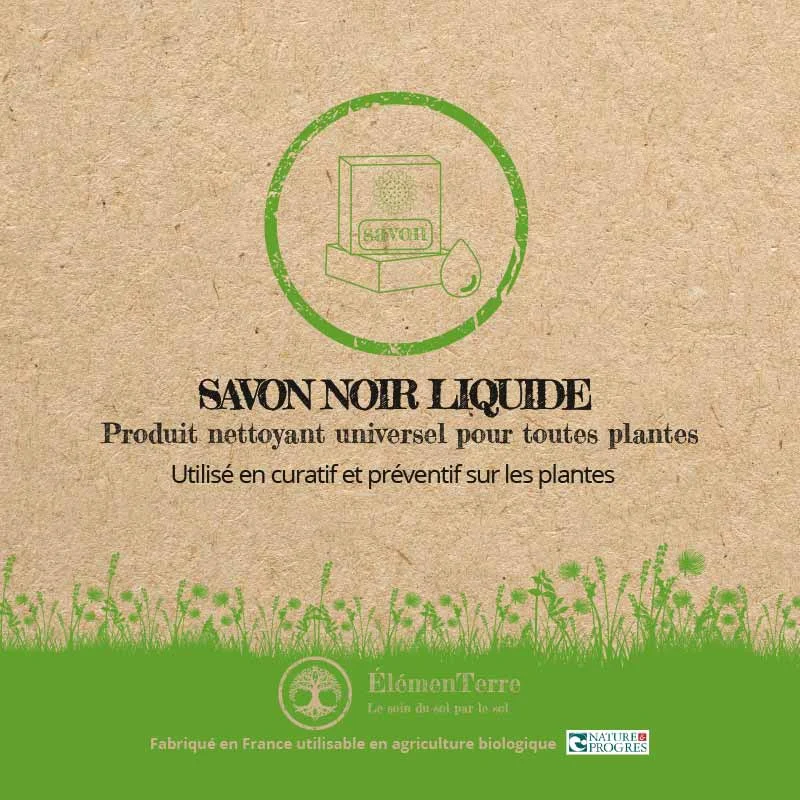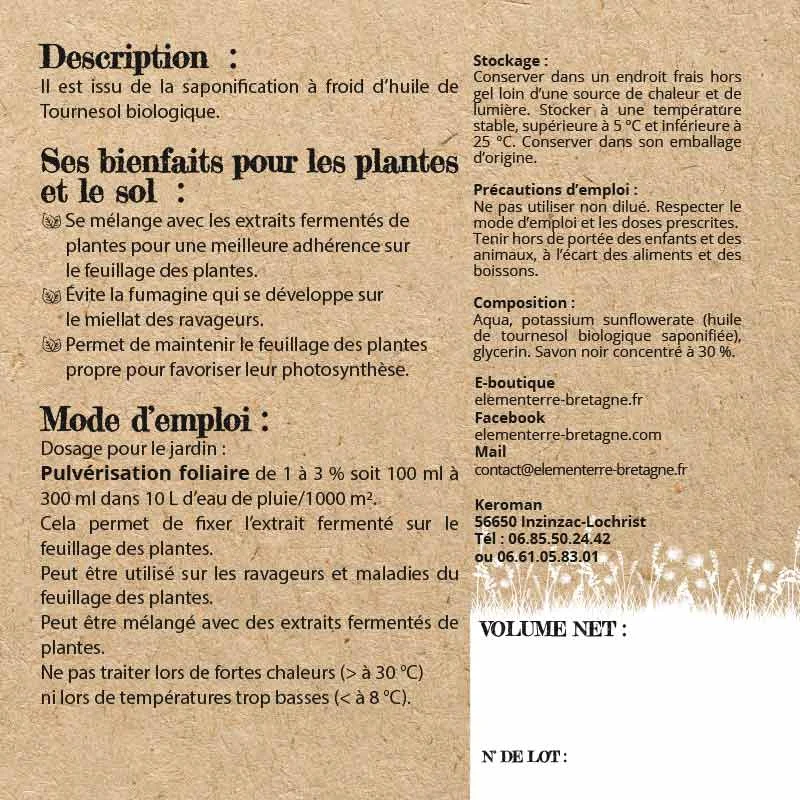Black Soap 1 L
Liquid black soap is THE natural multi-purpose product for the garden and home. Economical, it can be used to maintain habitats and care for animals, but can also be used on plants: biodegradable, it can be used both preventively and curatively against diseases and pests such as aphids, red spiders and even mildew!
Benefits of black soap
Liquid black soap is versatile in the garden and the home:
Black soap in the garden
- Prevents the invasion of aphids, mealybugs and red spiders.
- Antibacterial and antifungal properties.
- Wetting agent: mixes with fermented extracts for better adhesion to plant foliage.
- Keeps plant foliage clean to facilitate photosynthesis.
- Cleans garden tools to prevent the spread of disease.
- Tensio-active, allows essential oils to mix with water.
Black soap: home care
- Nourishes, sanitizes and disinfects all types of floors.
- Shines silver and copper.
- Cleans and cares for leather.
- Cleans and cares for paintbrushes.
- Washes walls.
How to use liquid black soap in the garden?
- To get rid of fugamine (black mold on plants after an aphid infestation): dilute 1 tablespoon in 1.5 liters of water and spray leaves.
- For anti-parasite action, mix 10 tablespoons in 2 liters of hot water against invasions of mealybugs, aphids, ants and red spiders. Spray onto plants (leaves/underleaves), stems, buds. This preparation also eliminates honeydew, a thick, viscous liquid excreted by these insects.
- For effective insect control, mix 5 tablespoons in 500 ml of hot water to combat thrips, leafhoppers and many others.
- As an adjuvant for plant treatments with Horsetail Decoction, Garlic Oil Maceration,Laminaria Fermented Extract andFern Fermented Extract. 3% dilution, 300 ml for 10 L of rainwater, to be applied as a foliar spray.
- Use in the morning and evening to avoid any risk of burning.
- For preventive and curative use against pests.
Fight mildew with black soap
Downy mildew is a fungal disease of plants. Its appearance and spread are favored by heat and humidity. It can be harmful to both amateur and professional gardeners. Nevertheless, it can be easily and quickly identified: brownish-yellow spots appear above the leaves. These then gradually dry out. Since it can survive in the soil for 3 to 5 years and is frost-resistant, there are a number of ways to prevent infection: water without wetting the leaves, grow under cover, rotate crops from one year to the next and, above all, aerate the vegetable garden well: in the greenhouse or garden, remember to space the plants far enough apart so that the leaves can dry out.
But what to do once mildew has set in? The first recommendation is to cut off infested leaves, taking care not to leave them at the foot of crops, as this could spread the infection to the soil.
There are also natural solutions for curative or preventive treatment, depending on how advanced the disease is.
Many vegetable species, such as squash, lettuce and tomatoes, can be affected by this disease. To combat mildew naturally, mix 20 ml of black soap and 5 g of sodium bicarbonate in 2 liters of hot water. Spray infested leaves and repeat after heavy rain.
Composition and origin
- Water, saponified organic sunflower oil, glycerine.
- Highly concentrated black soap: 30%.
- 100% biodegradable
- Made in France
- For use in organic farming
- Nature & Progrès certified














